

17 13 22 27 Thin The Herd: Fire Non-Performing Employees - John Tschohl, Service Quality Institute How PEOs Bill Clients For Service Rendered - Guillermo Triana, PEO Marketplace Augmented Intelligence: Why Human Judgement Remains Invaluable - Sandeep Goel, Moglix How Well-Organized Hybrid Helps You - Heather Larrabee, OfficeSpace JUNE 2023 • Vol.22 • No.06 (ISSN 2564-2057) NAVIGATING THE IMMIGRATION ADMINISTRATION JOURNEY - Nevil
U.S. Immigration
Integreon
Chheda, Vice President of
Services,

Articles 10 What Is Ahead? Is It More Of The Same Or Something Else? Unleashing your full potential - Bruce Hodes, President, CMI 15 The Importance Of Well-Being In A Global Workforce Navigating cultural differences for effective global well-being strategies - Pam Boiros, CMO, meQuilibrium 19 Career Education Paths: The Must-Have Strategy To Staff Your Hard-To-Fill Job Roles Why career education paths matter and how they can effectively build your workforce by tapping into your internal talent - Jonathan Lau, Chief Operating Officer, InStride 25 Nothing Is Free, Even Free Shipping Unveiling the reality behind “free” in business and the hidden costs involved - Shep Hyken, Customer Service and Experience Expert, Chief Amazement Officer, Shepard Presentations Navigating The Immigration Administration Journey 7 factors for outsourcing success - Nevil Chheda, Vice President of U.S. Immigration Services, Integreon 07 On the Cover INDEX HCM Sales, Marketing & Alliance Excellence JUNE 2023 Vol.22 No.06 ( ISSN 2564-2057)
Thin The Herd: Fire Non-Performing Employees
Boosting organizational success
 - John Tschohl, Founder and President, Service Quality Institute
- John Tschohl, Founder and President, Service Quality Institute
How PEOs Bill Clients For Service Rendered

Clearing the confusion surrounding HR service costs
- Guillermo Triana, Vice President, PEO-marketplace
Augmented Intelligence: Why Human Judgment Remains Invaluable

Enhancing human decision-making with augmented intelligence
 - Sandeep
- Sandeep
Goel, Managing Director, Moglix
Top Picks 13 17 22 27


































How Well-Organized Hybrid Helps You Enhance Your Employees’ Experience with Workplace Management Tech and Data Strategies
- Heather Larrabee, Chief
Marketing Officer,

















OfficeSpace

INDEX
Attn: HR Solution Providers!
Research
HR.com makes HR Professionals smarter and we are sure your solutions do as well.
That being said, we understand how hard it is to market in the Human Capital space, get the attention of your target audience and show HR departments that you are a valuable resource. So, how do you overcome this hurdle?
Easy. Work with HR.com.
With over 19 years experience working with HR solution providers, we give over 1,200,000 HR professionals access to the tools and resources they need to succeed. We work side-by-side with HR solution providers to help them generate sales leads, grow market share, build brand awareness and promote industry expertise.
Checkout our growing list of tools and resources our vendors can take advantage of to get noticed by HR professionals!
HR Marketing Institute
The HR Marketing Institute (HRMI) is the ONLY community of Marketing Professionals in the Human Capital space dedicated exclusively to the issues and needs of the marketing professionals and their businesses. This is a community of Marketing professionals who dedicate their time to marketing in the Human Capital space and who support each other to make the right decisions so that your marketing initiatives deliver the impact you need to succeed. Membership includes networking with peers, face to face summits, webcasts, research and benchmarking tools.
Webcasts and Virtual Events
Thought Leadership, Lead Generation and Educational Content
HR.com’s Webcasts and Virtual Events are more than an exercise in brand awareness. They are a comprehensive and groundbreaking way of generating tangible sales leads, while showcasing you as an industry authority to a captive audience of clients, prospects and the entire HR.com global community, giving you a greater market reach. In addition, HR.com’s one-hour webcasts provide valuable education and certification credits for today’s forward-thinking HR professionals.
Build your brand, content marketing strategies, and thought leadership with exclusive HR.com research. Choose between custom featured research or state-of-the-industry research sponsorship. With custom featured research, we work with you to develop research on the topic of your choice or align your brand with any of this year’s State of the Industry hot topics to highlight the latest HR trends. No matter which research strategy you choose, come away with your very own branded research report and infographic, establish yourself as an industry thought leader by presenting a webcast, get key insights from the opinions of highly qualified HR professionals, and maximize your ROI, and build a healthy sales funnel with over 1,000 qualified leads.
Managed Email Campaigns
Looking to expand your marketing reach? Build long-term customer loyalty? Generate high response rates? Drive website traffic? The value of HR.com’s opt-in direct email program allows you to do just that. Nurture potential buyers on a consistent basis through our managed campaign program. Deliver your message directly to HR decision makers’ inboxes. HR.com’s direct email lists are 100% optin, GDPR, CASL, and CAN-SPAM compliant and contain only the most exclusive names and companies in the human capital industry.
Online Advertising
Onsite advertising is a great way to reinforce brand and profile new products associated with a product launch. HR.com offers a variety of online advertising solutions including banner ads and premier homepage positioning making it a cost-efficient option for maximum brand exposure.
Buyer’s Guide
Be the Answer to the Questions HR Decision Makers are Asking

The HR.com’s Buyer’s Guide is where HR departments from around the world turn first when they need products and services. Put your company at the top of their list and get listed with the resource that HR professionals and decision makers trust.
Excellence Publications Interactive Targeted Learning ePublications
Aimed at Reaching Your Core Audience
HR.com’s 12 targeted and focused monthly online publications provide an invaluable collection of high-quality HR content and experts’ solutions to our members. Ten of our publications now feature themed editions that focus on specific topics. Sponsorship of research reports and webcasts aligned with the themes are also available.
For more information phone: 1.877.472.6648 | email: sales@hr.com | www.HR.com
Exclusive HR.com research
Our solutions will get you more clients, brand exposure, sales –and a marketing community too!
Editorial Purpose
Our mission is to promote personal and professional development based on constructive values, sound ethics, and timeless principles.
Excellence Publications
Debbie McGrath CEO, HR.com - Publisher
Sue Kelley Director (Product, Marketing, and Research)
Babitha Balakrishnan and Deepa Damodaran Excellence Publications Managers and Editors
Deepak S Senior - Design and Layout
HCM Sales, Marketing & Alliance Excellence Team
Deepa Damodaran Editor

Nataraj Ramesh Design and Layout (Digital Magazine)
Chandra Shekar Magazine (Online Version)
Submissions & Correspondence
Please send any correspondence, articles, letters to the editor, and requests to reprint, republish, or excerpt articles to ePubEditors@hr.com
For customer service, or information on products and services, call 1-877-472-6648
Debbie Mcgrath Publisher, HR.com
Deepa Damodaran Editor, HCM Sales, Marketing & Alliance Excellence
Navigating HR Decisions: From Immigration Administration to Employee Performance
Making the right decisions when it comes to human resources (HR) systems and services is crucial for any organization. Whether you’re contemplating the purchase of an HR system or considering outsourcing HR functions, the choices you make can have a significant impact on your company’s efficiency, productivity, and overall success. However, navigating the complex landscape of HR solutions can be daunting, and it requires careful research and thoughtful consideration.
Outsourcing your immigration administration workload can yield dramatic workflow advantages,freeing your HR team to focus on finding and onboarding the right talent. However, it is critical to choose the right partner — one that has the experience and the right combination of people, process and technology to handle your new hires’ immigration journey from beginning to end.
Check out Navigating The Immigration Administration Journey by Nevil Chheda from Integreon as he discusses the seven success factors that will help you make the right choice, right from the start.
Retaining employees who perform poorly is expensive both financially and emotionally. It costs a lot of
money to repair the damage they do. That includes the time it takes to correct mistakes they have made, dealing with a significant number of customer complaints, driving down morale, and creating friction, and infighting.
In Thin The Herd: Fire Non-Performing Employees, John Tschohl, from Service Quality Institute, tells us why not terminating non-performing employees can cost companies dearly.
Read How PEOs Bill Clients For Service
Rendered by Guillermo Triana, from PEO Marketplace, to understand HR service costs.
Also, read Augmented Intelligence: Why Human Judgment Remains Invaluable by Sandeep Goel, and How Well-Organized Hybrid Helps You by Heather Larrabee.
That is not all. We also bring you a few other expert columns, in this edition of HCM Sales, Marketing & Alliance Excellence and hope these will help you achieve excellence in your sales and marketing efforts.
Happy Reading!
HCM Sales, Marketing & Alliance Excellence (ISSN 2564-2057)

is published monthly by HR.com Limited, 56 Malone Road, Jacksons Point, Ontario L0E 1L0 Internet Address: www.hr.com
the publisher. Quotations
for any indirect or incidental damages arising out of these opinions and content.
Disclaimer: The views, information, or opinions expressed in the Excellence ePublications are solely those of the authors and do not necessarily represent those of HR.com and its employees. Under no circumstances shall HR.com or its partners or affiliates be responsible or liable
EDITOR’S NOTE
Subscribe now for $99 / year And get this magazine delivered to your inbox every month Become a Member Today to get it FREE! SIGN UP OR For Advertising Opportunities, email: sales@hr.com Copyright © 2023 HR.com. No part of this publication may be reproduced or transmitted in any form without written permission
must
from
be credited.
Write to the Editor at ePubEditors@hr.com
In a world of unparalleled challenges (global pandemic, racial injustice, political rivalry, digital 4.0, emotional malaise), uncertainty reigns. Finding opportunity in this context requires harnessing uncertainty and harnessing starts with reliable, valid, timely, and useful information. The Excellence publications are a superb source of such information. The authors provide insights with impact that will guide thought and action.

Excellence publications are my ‘go-to’ resource for contemporary and actionable information to improve leadership, engagement, results, and retention. Each edition offers rich and diverse perspectives for improving the employee experience and the workplace in general.


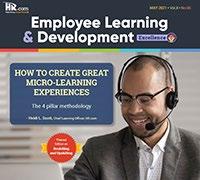
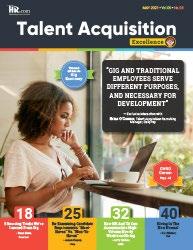
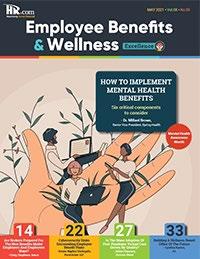
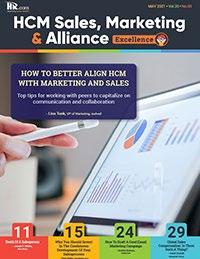
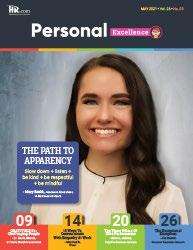
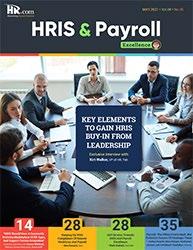
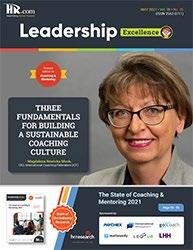
I regularly read and contribute to Leadership Excellence and Talent Management Excellence. I use many of the articles I read to augment my own presentations and I often share the articles with my clients. They are always quick, right on target for the latest issues in my field, and appreciated by my clients. If you want to stay up to date on the latest HR trends, choose a few of the different issues from the Excellence series of publications.
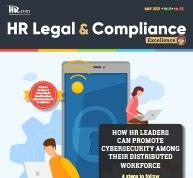
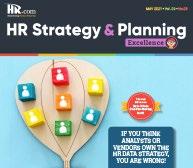
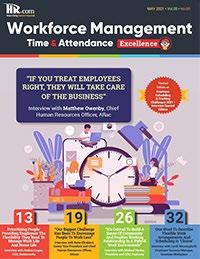
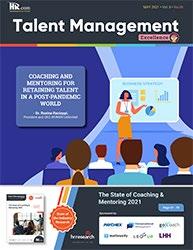
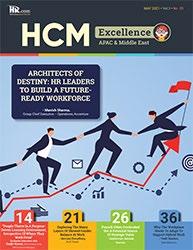
We’re eager to hear your feedback on our magazines. Let us know your thoughts at ePubEditors@hr.com
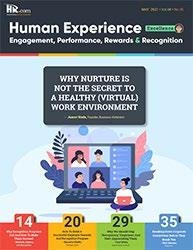 Dave Ulrich
Rensis Likert Professor, Ross School of Business, University of Michigan Partner, The RBL Group
Julie Winkle Giulioni Author, Virtual /Live Keynote Presenter, Inc.’s Top 100 Leadership Speakers
Dr. Beverly Kaye CEO, BevKaye&Co.
Dave Ulrich
Rensis Likert Professor, Ross School of Business, University of Michigan Partner, The RBL Group
Julie Winkle Giulioni Author, Virtual /Live Keynote Presenter, Inc.’s Top 100 Leadership Speakers
Dr. Beverly Kaye CEO, BevKaye&Co.
WHY EXCELLENCE PUBLICATIONS?
Navigating The Immigration Administration Journey
7 factors for outsourcing success
 By Nevil Chheda, Integreon
By Nevil Chheda, Integreon
Acrossindustry sectors, U.S. companies are pursuing a global talent recruitment strategy to fill critical skills gaps. At the same time, human resources (HR), legal departments, and law firms are seeing high attrition rates among paralegals and attorneys with expertise in immigration matters. This dual challenge creates a major administrative headache for HR teams struggling to navigate the complex immigration journey for international recruits.
Outsourcing immigration employment tasks to a corporate law firm or accounting firm can be cost-prohibitive — and few firms have the specialized resources and infrastructure to handle large volumes of visa applications, petitions, mail documents, and other immigration-related activities. Turning it over to an outsourced service provider can be a far more cost-effective option — potentially reducing immigration administrative costs by up to 40%. However, service providers are not all equal when it comes to immigration.
Submit Your Articles HCM Sales, Marketing & Alliance Excellence presented by HR.com JUNE 2023 7 COVER ARTICLE
How can you be sure an outsourcing partner is the right fit for your immigration program? Consider the following 7 success factors.
1. Immigration Expertise
U.S. Citizenship and Immigration (USCIS) policies and procedures are complicated. Moreover, the regulations frequently change. It is imperative to work with a provider that has extensive experience in this area with well-established processes to stay on top of regulatory changes. Applications must be processed accurately and in a timely manner throughout the immigration journey, so make sure the provider has a solid understanding of the relevant requirements and timelines. Working with a provider that has years of experience and a track record of handling large volumes of USCIS documents and applications can help avoid costly missteps.
2. Technology Enablement
As with other areas of HR administration, technology plays a key role in ensuring both efficiency and quality in immigration processes. It is crucial to work with a provider that has made the right investments in automated technology that is purpose-built for
immigration administration by technologists who understand the immigration space.
Ensuring the provider can integrate with your in-house HR systems is also important, reducing duplicated effort and making information on your immigration program readily accessible. A tech-enabled provider should be able to provide analytical data to help you monitor your program. This enables you to access critical production metrics — including application status, critical immigration dates, upcoming visa expirations, and more — with the press of a button instead of relying on spreadsheets.
3. Privacy and Security
Safeguarding personal identifiable information (PII) is essential for regulatory compliance — and for protecting your brand as a trusted employer. This is an area that deserves close attention when evaluating a service provider. Are they compliant with the relevant privacy and information security management frameworks? Asking questions up front can help avoid an embarrassing and costly breach down the road.
Navigating The Immigration Administration Journey
Submit Your Articles HCM Sales, Marketing & Alliance Excellence presented by HR.com JUNE 2023 8
4. Quality Performance
While outsourcing immigration tasks can dramatically reduce costs, it should never compromise quality and accuracy. Make sure the provider has documented processes that include a stringent quality assurance regimen that includes multiple quality checks and a commitment to continuous improvement. Having people with the right skills and training in the right roles also impacts quality. Consider asking probing questions about the service team assigned to your account to make sure they have the requisite experience.
6. Process Optimization
The best service providers can also help improve your in-house immigration processes. They can assign a special team of Six Sigma experts to evaluate your ways of working and recommend changes based on best practices to optimize your team’s efficiency for even greater savings in time and effort.
7. Client Engagement
Forging a collaborative relationship with your immigration service provider is essential to ensure you receive maximum value. This includes having easy access to production reports, as well as regular monthly or quarterly meetings to make sure services are meeting your needs. Make sure the provider assigns a dedicated Project Manager to the account. Ideally, this individual will spend time on your site to fully understand your needs.
Making the Right Choice
It is also important to ask about their quality metrics and service level agreements (SLAs). A provider should be able to demonstrate accuracy levels approaching 100% and timely delivery.
5. Speed and Scalability
One of the greatest advantages of outsourcing is gaining the flexibility to scale resources up or down to match workflow peaks and valleys. This requires a provider to have a deep bench of experienced resources. In addition, team members should be cross-trained so that they can be redeployed to whichever area of specialization is required to meet the immediate demand.
Working with a provider that has multiple service centers around the globe also provides advantages. This enables a “follow the sun” model that accelerates delivery by performing work during overnight hours in the U.S. In addition, having multiple service centers is crucial for disaster recovery, ensuring business continuity in the event of a natural disaster or disruption impacting one location. Make sure the provider has a documented business continuity and disaster recovery plan.
Outsourcing your immigration administration workload can yield dramatic workflow advantages, freeing your HR team to focus on finding and onboarding the right talent. However, it is critical to choose the right partner—one that has the experience and the right combination of people, process and technology to handle your new hires’ immigration journey from beginning to end. Paying attention to the seven success factors can help you make the right choice, right from the start.
Nevil Chheda is a Vice President of U.S. Immigration Services for Integreon
Based in Mumbai, India, Nevil oversees immigration operations serving Integreon clients worldwide.
Would you like to comment?

Navigating The Immigration Administration Journey
Submit Your Articles HCM Sales, Marketing & Alliance Excellence presented by HR.com JUNE 2023 9
Forging
a collaborative relationship with your immigration service provider is essential to ensure you receive maximum value
What Is Ahead? Is It More Of The Same Or Something Else?
Unleashing your full potential
By Bruce Hodes, CMI
Asexecutives and business leaders, there is a lot on our plate. In business, there are many needs and urgent matters to attend to. As business leaders, this is a fast-paced Olympic-like game we play. Then we add family, children, grandchildren, personal hobbies, social time, and vacation to this mix.

We are clearly “Big People” and have “Big Lives”. When is it time for something else? When is it time for that dream or that possibility, which has been a thought or yearning, but has never happened? This is the question I am putting before you.
As you may or may not know, 2023 is the year of my partial sabbatical. As a celebration of my 45 years of working, I am working less and focusing on other activities. 2023 is a blank chapter. It is like a farm field near where I live in the winter… newly covered with crystal white unmarked snow…. the trees on the other side…. dark and mysterious.
You know how life will end. It ends in dust. Yet what is in between? This unwritten future is what matters. This is the year for me, largely unscripted. My purpose is to rediscover love, life, and contribution. I have been working for forty-five years, raising a family and running a company. Turning seventy was the wake-up call.
This is the year I have been talking about.
For the most part, I have my health and stamina; I can (still) walk for miles at a time. I can do a 30-minute strength class on Peloton. I have my brain. When am I going to commit time to something beyond making money and surviving, waiting for dust? In January, I saw that I was doing 2023 like any other year. Working a lot; running the company; creating a future with it.
I needed an interruption. I needed something to break me up. I needed a statement to myself, my company, my family, and the world that this is a different year. I looked at trips. Lapland and Finland, while others were too cold. Hiking in Cambodia and Vietnam seemed too placid. Biking in Cambodia and Vietnam, hmm...
Submit Your Articles HCM Sales, Marketing & Alliance Excellence presented by HR.com JUNE 2023 10
What Is Ahead? Is It More Of The Same Or Something Else?
I had not been on a bike in two years, I had not biked over ten miles in twenty-five years, I was dealing with a knee injury and was not sure I would be able to bike long distances. I had little connection to Cambodia or Vietnam. I did not know the language. I had never been there. For the most part, it was a mystery. My ex and daughter both expressed concern about my ability to do the trip, but for me, it was all perfect. A challenge coming together.
I had forgotten how great travel is for getting out of your rut, getting uncomfortable and seeing the world from a new perspective. Bike riding in Cambodia and Vietnam fulfilled the above. There I was riding a bike among thousands of scooters coming at me from all angles and sides. The street of Hanoi redefines chaos. Think of a school of fish and sticky rice as tools to cross a street and navigate. Being able to discern a hello honk from an I am about to run you over honk. I learned to bicycle in this environment.
Seeing a new, foreign country from the seat of a bike is the way to see a new, foreign country! There were water buffaloes wandering, many temples, a Vietnamese cemetery dedicated to soldiers who fought against us, and the Hanoi Hilton.
There was this hot day. After a 30-mile bike ride we were blessed by a Buddhist Monk. The Icy water cascaded down upon us. This is called a water blessing and what had been blessed before us was a new car. I love being in unfamiliar territory that I cannot fathom or understand.
As you can see, there were so many new sights, sounds and experiences. I came away revitalized, refreshed, and newly engaged. I highly recommend adventure travel for getting out of the rut, being able to see things new and getting re-energized. Yet as I sit with CEOs and business leaders, I see many other options.
Bill wants to meaningfully engage in racial equality and systemic racism. Sally’s passion is mental health and ensuring that all have access to support and services. Rick wants to coach entrepreneurs. Joe has a startup in the pet industry - a bootie for dogs that will revolutionize pet shoes. Miriam just wants time to do whatever.
As these executives ponder the possibilities there is always the lurking issue of time. When is there time? When is the time? When is the time for that trip you want to take? For me next, it could be Antarctica or perhaps Mongolia or going back to Cuba or the national parks in America, which I have never been to. Time for that passion whether it is making a difference, playing in a band or just chilling.
Recently, I have been diagnosed with A-fib. This is a heart condition while not immediately threatening, it could be. There are few symptoms and some procedures, doctor visits, crowded offices, and appointments. These are all distractions demanding attention. For the first time in my adult life my returning to health is a focus. It has made me think that now is all we have and that the future is totally unwritten.
So, my beloved business leader and executive, when is the time? You have your success, your grandkids and all that is gratifying. However, that is not what I am talking about. Is there a Buddhist water blessing in your future? Is there a Cambodian ten-year-old girl on a dirt road in the middle of nowhere waving joyfully and practicing her English by saying hello?
When is it time to have your dreams go from someday I will do that to now is the time to do it? When do you go from a someday maybe life to a this is life? When is booking the trip, playing the instrument, or having the conversation the thing that happens right now? Let me know what actions you are taking that light you up, excite you, and free you from resignation and just another day. Let me know what your adventure will be. I look forward to hearing from you.
Keep causing and creating.
Bruce Hodes is the President of CMI
Would you like to comment?

Submit Your Articles HCM Sales, Marketing & Alliance Excellence presented by HR.com JUNE 2023 11
C AL LI N G AL L H R MAR K ETIN G
GU R U S - SHAR E
YO U R E X PERT I S E
W I T H OTHER S !
Are you an exper t in Marketing in the Human Capital space? If yes, you’re invited to submit ar ticles for inclusion in our publication, HCM Sales, Marketing & Alliance Excellence!
This publication helps Sales and Marketing professionals in the Human Capital space learn emerging trends to help them in their business and now you can share your marketing exper tise with them!

Check out our magazine here
Our readers are interested in a number of topics including:
● Marketing hacks for HR Solution Providers
● Building relationships with current and potential clients
● Tradeshow expo halls - best practices for ROI
● Branding and your online presence
● Aligning Marketing roles with your business growth strategy
● Marketing Tactics to increase ROI
● Mar tech Enablement
● Marketing Analytics
● how to count its sale value
● How to nur ture stronger par tnerships between marketing and sales
● and analysts
● Market planning process
● How to build a brand
● How to win with PR
● How to use Social to drive brand recognition and sales
● Your approach to producing and disseminating meaningful thought leadership
● How marketing needs to evolve for success
Ar ticle submission deadline: 1st of each month 1
Kindly let us know if you’d be interested to feature your ar ticle in our magazine by emailing the editor at ddamodaran@hr.com. You can also review our submission guidelines by clicking here
.
Also, if you are in marketing in the human capital space, we invite you to host a webcast for our HR Marketing Institute. For more details, please email Shelley Marsland-Beard at smarsland@hr.com
Thin The Herd: Fire Non-Performing Employees
Boosting organizational success
 By John Tschohl, Service Quality Institute
By John Tschohl, Service Quality Institute
Thereis a term ranchers use when they are reducing the size of livestock by removing weak animals from the group. That term is “thinning the herd.” It could also be used in the context of terminating non-performing employees, something most organizations do not do nearly as often as they should.
Retaining employees who perform poorly is expensive both financially and emotionally. It costs a lot of money to repair the damage they do. That includes the time it takes to correct mistakes they have made, dealing with a significant number of customer complaints, driving down morale, and creating friction, and infighting.
Submit Your Articles HCM Sales, Marketing & Alliance Excellence presented by HR.com JUNE 2023 13 Top Pick
It also impacts morale and results in an increase in employee turnover. High achievers — those employees who show up on time every day, work hard, and do more than is expected — do not want to stay with you. They will not respect you and will soon be heading out of the door to work for someone who does not tolerate bad employees.
They notice when you give poor-performing employees a pass and will question your ability to lead and make good decisions. They will also resent you for relying on them to pick up the slack. You should do everything in your power to keep high-achieving employees.
Keeping employees, who perform at substandard levels, can also impact you personally and professionally. Bad employees can take you down with them. When your superiors realize what you are costing the company by not firing those employees, you could very well be overlooked for promotions — or get fired yourself.
So, how do you go about letting those employees go? First, you must realize you can not save them from themselves. They simply do not care about their performance, you, or your company. Cut them loose.
Good managers can identify the negative traits of an employee within the first 30 days. That includes job knowledge, job fit, and performance. At year one, you should have a clear record of performance reviews. Take notes, document problems, and track corrective action. Make sure employees understand what is expected of them and why.
If you expect an employee to improve, both of you should understand what that improvement should look like. Schedule a time to review those expectations and benchmarks. If they have not been met, it is termination time.
Firing someone can seem heartless at times but continuing to employ people who routinely fail is a disservice to them and your organization. On the positive side, it might serve as a wake-up call to those employees and spur them on to improve their skills, their attitudes, and their performances.
It can take some time to recover and rebuild your team spirit after terminating bad employees. It can leave you feeling empty and exhausted, but you can turn things around by quickly getting back on track and doing whatever it takes to build a strong, cohesive team of employees who respect you for “thinning the herd.”
John Tschohl is the Founder and President of the Service Quality Institute . He is considered one of the world’s foremost authorities on all aspects of customer service and has written several books, including “Moving Up: A Step-by-Step Guide to Creating Your Success.”
Would you like to comment?

Thin The Herd: Fire Non-Performing
Employees
Submit Your Articles HCM Sales, Marketing & Alliance Excellence presented by HR.com JUNE 2023 14
The Importance Of Well-Being In A Global Workforce
Navigating cultural differences for effective global well-being strategies
By Pam Boiros, meQuilibrium
Fortoday’s global workforce, mental well-being is critical not only for overall health and well-being, but also for maintaining a satisfying and productive work life.
According to Gallup, data from a global sample show that more than 40% of employees worldwide experienced stress or worry much of the previous day. These challenges to mental well-being have a direct, negative impact on business outcomes.
Submit Your Articles HCM Sales, Marketing & Alliance Excellence presented by HR.com JUNE 2023 15
In addition to the medical costs for treating anxiety, poor mental well-being has important productivity impacts. Aon/IPSOS reports that globally, 28% of employees say that they have trouble concentrating, 20% are taking longer to complete their work, and 15% have trouble with reasoning or decision-making.
Employers are increasingly offering mental well-being tools and programs to help meet employees’ needs for support. For large multinational companies with a footprint across many different countries, merely offering a program to a global employee population does not ensure that the solution will resonate with everyone who needs it. For example, a mindfulness program that enjoys widespread adoption in Southeast Asia may struggle to find traction among employees in Latin America.
Deep-rooted cultural differences play a significant role in shaping attitudes toward many of the benefits offered by employers. In a global population, messaging about digital well-being tools focused on mindfulness, sleep, resilience, and stress face not only the challenge of cutting through the noise of high-volume corporate communications but also working with and around important differences in cultures.
Culture has a powerful influence on our beliefs about the relative importance of individual versus group accomplishment. Culture even impacts our degree of openness to new experiences. Maximizing the reach and impact of digital well-being tools requires a thorough understanding of the cultural landscape that colors individuals’ attitudes and beliefs.
The Importance of Resilience
Resilience, the ability to adapt and effectively deal with adversity, addresses many foundational components of mental well-being. More resilient employees have better health outcomes, are less depressed, and are more productive at work. Research has identified core competencies of resilience, such as emotion control, impulse control, empathy, and mindfulness, that equip employees to overcome adversity and thrive at home and in the workplace.
meQuilibrium research shows that resilience can be measured and learned. Highly resilient people are:
● 60% less likely to experience burnout
● 31% more engaged
● 80% less likely to exhibit signs of depression
● 88% better at stress management
Prioritizing Well-being in the Global Workforce
By prioritizing well-being, organizations can improve the health and wellness of their employees, increase productivity, and create a positive and supportive work environment. However, an effective global well-being strategy requires careful attention to cultural differences. An effective global employee well-being strategy requires tailoring employee communication in ways that resonate with local culture.
To maximize employee activation related to mental well-being in multinational enterprises, messaging about the benefits of improving one’s well-being must account for differences in how a culture receives messages and differences in work-related values.
Pam Boiros is CMO of meQuilibrium
During her two-decades-long career in HR tech, Pam has brought transformative tech to the market and changed the way the category is perceived. Pam’s work has been featured in Harvard Business Review, the Association for Talent Development, and Bloomberg Law. She has been a speaker at many national and international conferences, including CLO Symposium, People Matters’ Talent Tech Evolve, HR Sales and Marketing Institute Summit, and LearnTrends.

Would you like to comment?
The Importance Of Well-Being In A Global Workforce
Submit Your Articles HCM Sales, Marketing & Alliance Excellence presented by HR.com JUNE 2023 16
How PEOs Bill Clients For Service Rendered

Clearing the confusion surrounding HR service costs












 By Guillermo Triana, PEO Marketplace
By Guillermo Triana, PEO Marketplace
Professional employer organizations, or PEOs, are third-party service providers that offer a range of HR services to small and medium-sized businesses. These services can include everything from payroll processing and tax compliance to employee benefits and workers’ compensation insurance.
One of the key benefits of working with a PEO is that it can help businesses save time and money by outsourcing their tactical HR functions. However, it is important for businesses to understand how PEOs bill for their services, as there are two main methods: bundled and unbundled.
Bundled Services





































Bundled services are the most common billing method used by PEOs. In this model, the PEO charges a single fee for a comprehensive package of HR services. This fee is typically a percentage of the client’s total payroll costs, although some PEOs may use other methods to calculate their fees.



The bundled services model can be beneficial for businesses that want a turnkey HR solution. By paying a single fee, businesses can outsource all of their tactical HR functions to the PEO, including payroll processing, benefits administration, and compliance with federal and state regulations. This can be especially helpful for small businesses that do not have the resources or expertise to manage these functions in-house.
Another benefit of bundled services is that they can be cost-effective. Because PEOs have economies of scale, they can often offer insurance and HR services at a lower cost than businesses can provide on their own. Additionally, PEOs can help businesses avoid costly compliance mistakes by ensuring that they are following all relevant regulations.
However, bundled services may not be the best fit for every business. Some businesses may only need a few specific HR services and may not want to pay for a comprehensive package. Additionally, businesses that have already invested in HR technology or have in-house HR staff may not want to outsource all of their HR functions to a PEO.
Submit Your Articles HCM Sales, Marketing & Alliance Excellence presented by HR.com JUNE 2023 17 Top Pick
Unbundled Services
For businesses that only need specific HR services, unbundled services may be a better option. In this model, the PEO charges separate fees for each service that the business uses. This allows businesses to pick and choose which services they need, and only pay for those services.
Unbundled services can be beneficial for businesses that want to maintain control over certain HR functions, or that have already invested in HR technology. By only paying for the services they need, businesses can save money compared to a bundled services model.
However, unbundled services may not be as cost-effective as bundled services for businesses that need multiple HR services. Because each service is billed separately, the total cost can quickly add up. Additionally, businesses that only use a few services may not be able to take advantage of the economies of scale that PEOs can provide.
Factors Affecting PEO Billing
The specific fees that PEOs charge for their services can vary depending on a number of factors. Some of the most important factors include:
1. The size of the business: Larger businesses may be able to negotiate lower fees than smaller businesses, as they can provide more revenue for the PEO.
2. The industry of the business: Some industries may be more complex or require more specialized HR services than others. PEOs may charge higher fees for businesses in these industries.
3. The location of the business: PEOs may need to comply with different state and local regulations depending on where a business is located. This can affect the fees that they charge.
4. The length of the contract: PEOs may offer discounts to businesses that sign longer contracts. Businesses that are willing to commit to a longer contract may lower their overall PEO costs.
Ultimately, the decision to use bundled or unbundled PEO services will depend on the specific needs of the business. Businesses that have a large workforce and need a comprehensive suite of HR services may benefit from bundled services, while smaller businesses with more specific needs may prefer unbundled services.

In conclusion, PEOs offer a range of services to businesses, including payroll administration, employee benefits, and compliance assistance. PEOs can bill for their services in two ways: bundled and unbundled. Bundled services include a full suite of HR services, while unbundled services allow businesses to select only the specific services they need.
Each option has its advantages and disadvantages, and businesses should carefully consider their specific needs before choosing which option is right for them. With the right PEO partner, businesses can focus on growing revenue while leaving their HR needs in the hands of experts.
Recommended Resources: Where can people find more information about your article? https://peo-marketplace.com/guide-to-peo-billing-reports/
How PEOs Bill Clients For Service Rendered
Would you like to comment? Submit Your Articles HCM Sales, Marketing & Alliance Excellence presented by HR.com JUNE 2023 18
Guillermo Triana is the Vice President of PEO Marketplace
Career Education Paths: The Must-Have Strategy To Staff Your Hard-To-Fill Job Roles
Why career education paths matter and how they can effectively build your workforce by tapping into your internal talent
By Jonathan Lau, InStride
Thelabor market is currently experiencing considerable disruption with employers facing an increased need for novel roles and employee skills. This presents a challenging decision for companies: downsize their workforce significantly and subsequently compete to hire workers possessing the required new skills, or reskill their existing employees who already have an understanding of the business, thus bridging these skill gaps.
With the potential to save employers around $40,000 per person, choosing to reskill an employee for a new role rather than hiring additional talent proves to be a more cost-effective decision, beneficial for both the business and employees.
While the value of upskilling existing staff to fill crucial roles is undeniable, the hurdle is converting this theoretical approach into a workable plan. Many organizations lack the required frameworks for effective workforce planning and talent development, hindering their capacity to invest in reskilling successfully.
This is where career education paths (CEPs) — which bring employer, employee and academic partners together to solve a skill gap — come into play. By linking learning with career advancement, CEPs provide an ideal solution for employees interested in progressing in their careers but uncertain about how to begin. For companies, these paths offer a strategic and
targeted approach to addressing crucial talent gaps, aligning existing competencies with the vital skills needed to drive innovation and growth.
The following are five essential elements that form the foundation for creating CEPs that connect workforce education with your business needs.
1. Alignment: Connect Workforce Education to Business Goals
Historically, a critical gap has existed between traditional workforce education, such as tuition reimbursement and content libraries, and actual business needs. CEPs effectively bridge this gap by creating programs tailored to a company’s unique workforce and business goals.
Submit Your Articles HCM Sales, Marketing & Alliance Excellence presented by HR.com JUNE 2023 19
The process starts with a discovery stage that involves reviewing your company’s existing job roles and internal career paths and mapping out organizational needs. The next step is to identify specific talent gaps and high-demand roles.
Once these high-need roles are identified, companies should review job descriptions for these roles, interview stakeholders to determine the required competencies and skills, and align these roles with a comprehensive, global skills taxonomy.
2. Clarity: Design Welldefined Paths Toward Career Advancement
Unlike education marketplaces, which offer thousands of options without tying any of them to applicable skills or roles, CEPs provide transparent and easily navigable paths toward career advancement. Additionally, they aid in fostering upward mobility and enhancing diversity across all organizational levels.
CEPs identify desired workplace roles and curate tailored
educational programs for each organization. They should clearly outline the sequential progression of courses, certificates and/or degrees required for employees to acquire the necessary education for specific roles.
CEPs equip employees with the knowledge and skills required to facilitate both upward (ladder-like) and diagonal (lattice-like) career movements within an organization.
For example, in the healthcare industry, a ladder-like progression might involve recruiting individuals for roles, such as medical assistants (MA) or patient care technicians, then helping them fulfill their pre-licensure requirements for Nursing. After becoming registered nurses (RN), they can be supported to advance toward positions such as nurse leader, nurse practitioner, or nurse educator.
On the other hand, a lattice-like progression could involve transitioning an environmental services (EVS) technician to sterile processing or assisting
a medical assistant — who no longer desires a patient-facing role — to shift into IT, health information management, or medical billing and coding roles.
Breadth and Depth: Meet Learners Where They Are in Their Education Journey
CEPs should be built for a variety of roles and incorporate a mix of learning types — including degree programs, certifications and short courses – to meet learners where they are in their learning journey.
For example, a study by the Brookings Institute found that about one in seven adult learners who dropped out of college had earned at least 30 credits and had a GPA of 2.0 or higher. For these employees, on-ramps that focus on allowing them to boost their GPA and earn credits through a flexible credit program may be effective. This lets learners enroll in single courses from accredited institutions, helping them finish the bachelor’s degree program they were already close to completing.
This same story is true for many other types of employees with non-traditional education journeys. For these learners, additional on-ramps and tailoring can help drive engagement. These could encompass English-language learners, high school ramps, community college ramps and “stepping stone” university ramps.

Career Education Paths: The Must-Have Strategy To Staff Your Hard-To-Fill Job
Roles
Submit Your Articles HCM Sales, Marketing & Alliance Excellence presented by HR.com JUNE 2023 20
Simplicity: Streamline the Workforce Education Process to Increase Participation
Traditional initiatives, such as tuition assistance programs (TAP), often require significant time and effort from all stakeholders. They entail lengthy paperwork for employees, manual management by HR departments, and the burden of choice and upfront costs for employees seeking learning opportunities.
CEPs streamline the user experience for both employers and their learners by mapping education to career advancement. Compared to TAPs, which typically see below 2% participation, CEPs have managed to achieve rates that are 2-5x higher.
In action: A medical device company’s program expanded to accommodate various learning options, workforce segments and geographical locations in accordance with their evolving business needs. The initial program was focused on skills mapping and helping employees find learning options for manufacturing careers. Since then, the program has grown to offer specific learning options aligned with in-demand careers in IT, added tuition reimbursement capabilities and expanded internationally to approximately 90,000 employees globally. Currently, 60% of learners are enrolled in IT learning options that were
launched in phase 2 of the program with 95% of employees who participated in the program staying with the company, a 2-3x reduction in attrition compared to non-participants.
Technology: Enabling access to an exceptional education journey
Once CEPs are established, a key is to ensure they reach the intended audience, your people.
A powerful technology platform allows your employees to easily search career path options, then seamlessly connect with academic partners and directly enroll in degree/credential programs. It can also streamline program administration for HR leaders, allowing them to concentrate on fine-tuning the strategy to maximize the impact of their workforce education program in alignment with business needs.
For employees interested in a specific career, a platform can provide employees with detailed and clear information on what the career involves. This could include what a “day in the life” might look like, what education is required and how quickly the career is growing nationally. Employees should also be able to see any pertinent company-specific information about the career, such as if there is high demand within their company or if there is a certain type of certification that is preferred by
their organization. This ability to explore and understand careers is a crucial aspect of providing a strong start to a learner’s educational journey.
Education is a powerful, proven way to enable career advancement. CEPs can help you choose the right education program to upskill and fill those gaps.
For employees, they provide a clear link between educational opportunities and their shortand long-term career objectives. This enables them to confidently choose a learning option that matches their career goals. At the same time, CEPs are structured to meet an organization’s talent needs by building pipelines for high-need roles, while attracting, retaining and engaging employees in the process.
Jonathan Lau brings years of experience at leading technology, education, consulting and investment firms, along with a passion for building purposeful and sustainable organizations. Currently, he is the Chief Operating Officer of InStride.
Would you like to comment?

Career Education Paths: The Must-Have Strategy To Staff Your Hard-To-Fill Job Roles Submit Your Articles HCM Sales, Marketing & Alliance Excellence presented by HR.com JUNE 2023 21
Augmented Intelligence: Why Human Judgment Remains Invaluable
Enhancing human decision-making with augmented intelligence
By Sandeep Goel, Moglix
Picture this: A stock market trader who has invested time and effort in researching the stock market. There are 3 ways he could execute a trade:
a. He researches on his own and decides which trades to make.
b. He can opt for algo-trading, an AI tool that automates trading based on data, and analytics and executes trades on his behalf. But if the algorithm is faulty, he may end up with heavy losses.
c. He can decide not to automate his trades, and instead be provided with accurate data and analysis that considers millions of triggers for the stock market. He could assess the risk/ reward of any trade and then make an informed decision about whether to execute it.
So which option would anyone be more comfortable with?
Most of us would like to be in control of the decision-making while not having to go through rigorous research.
Take another exampleself-driving cars, like Tesla's, require constant monitoring and a human behind the wheel to make decisions when the machine cannot. This is a prime example of how human judgment remains critical in today's advanced technological landscape. In an age of AI and machine learning, our ability to make sound decisions and assess complex situations remains essential.
This process of human intelligence amplification through artificial intelligence is known as augmented intelligence (AU).
While there is ongoing debate regarding the potential risks of
AI turning into a "Frankenstein monster," there is a consensus that collaborative intelligence holds the key to the future. AU emerges as a powerful concept that seeks to enhance human intelligence rather than replace it with technology. By combining the unique strengths of humans and machines, AU unleashes greater cognitive performance and facilitates better decision-making.
The impact of augmented intelligence spans various industries, revolutionizing the way work is done and boosting efficiency, productivity, and profitability. The rapid advancement in this field is truly remarkable, with projections from MarketsandMarkets™ indicating that the global human augmentation market is set to reach a staggering USD 341.2 billion by 2026.
Top Pick Submit Your Articles HCM Sales, Marketing & Alliance Excellence presented by HR.com JUNE 2023 22
Intelligence Amplified
While AI's responsiveness is limited to available data, humans possess a remarkable array of capabilities. Unlike AI, humans have the capacity for envisioning, predicting outcomes, experiencing emotions, and making judgments in dynamic contexts. These unique abilities enable humans to prioritize long-term considerations, independent of constant external data. This distinctive form of intelligence can be referred to as "authentic intelligence," which sets humans apart from AI in their holistic approach to decision-making. This becomes more productive when combined with the data and analytics from AI.
Let us understand this with an example. Take legendary chess master Garry Kasparov as an
example. In the late 90s, this unparalleled grandmaster found himself up against IBM's Deep Blue supercomputer. He was defeated, and it led him to rethink his former approach to chess and explore how humans and AI could team up. After partnering with a PC and playing against a formidable opponent in Veselin Topalov, Kasparov learned a lesson. The "advanced chess" match resulted in a tie score of 3-3, indicating that by using his preferred chess software and combining his strategic abilities with AI, he could level the playing field, or even win.
Similarly, industries across the board are experiencing a significant transformation, harnessing the power of emerging AI technologies to enhance processes and systems,

particularly in the realm of supply chain management.
Smart Sourcing: Unleashing Augmented Intelligence for Supply Chain Success
Augmented intelligence is transforming supply chain and procurement processes by providing powerful tools to manage complexities and drive efficiency. From predictive analytics to robotic process automation, AI-powered platforms are transforming the way businesses manage inventory, optimize supply chains, and mitigate risks.
One of the key benefits of augmented intelligence is improved efficiency, which results from streamlined processes that enable faster decision-making. With AI algorithms analyzing historical data and identifying patterns, businesses can:
● Forecast demand with greater accuracy: By interpreting unstructured data from emails, documents, and other sources, natural language processing systems can extract insights and automate tasks like contract management.
● Optimize inventory levels: With AI-driven demand forecasting and optimal inventory management, businesses can achieve greater precision in their operations.
Augmented Intelligence: Why Human Judgment Remains Invaluable
Submit Your Articles HCM Sales, Marketing & Alliance Excellence presented by HR.com JUNE 2023 23
Moreover, augmented intelligence is enabling proactive decision-making by providing real-time insights into supply chain performance and risks. By leveraging AI-powered platforms for intelligent supply chain visibility, businesses can quickly respond to disruptions, mitigate risks, and make informed decisions that drive growth.
The Harmonious Integration of Augmented Intelligence and Human Judgment
When it comes to the future of work, melding the brilliant abilities of both humans and AI is the way to go. This collaboration is not only the key to efficiency but also unleashes creativity, accuracy, and proactive strategies that just are not possible with one alone.
The digital revolution has permeated every industry, and supply chain management is no exception. They bring an enormous potential for what's to come in cooperative ventures between augmented intelligence and humans. It is the quintessential partnership as both sides steadily adapt to serve humanity's best interests in a multitude of areas.
Navigating a Collaborative Future

There is a common myth that AI will inevitably replace human intelligence. However, this could not be further from the truth. Despite advancements in software designed to replace humans in basic tasks and
eliminate human error, there are crucial steps that must be taken before relinquishing complete control to machines. One pivotal step involves ensuring the integrity of our data flows. In simpler terms, it is essential to guarantee the accuracy and reliability of the data used by AI systems; otherwise, the decisions made by machines could lead to catastrophic consequences.
By leveraging their expertise and understanding of market dynamics, they can make informed decisions that drive efficiency, cost savings, and customer satisfaction throughout the supply chain.
Therefore, human judgment assumes a central role in making decisions that prioritize customer satisfaction, as AI has yet to replicate the depths of human intuition and empathy. Hence, the most triumphant companies are those that forge a harmonious collaboration between humans and machines.
As the dawning era of augmented intelligence is embraced, it is crucial to appreciate the essence of human+AI collaboration. The future will be intertwined around this.
Moreover, the supply chain and procurement industry faces intricate complexities that surpass the capabilities of machines alone. Professionals in this field must not only optimize processes but also consider the nuanced needs and expectations of end customers. Just like in manufacturing, supply chain and procurement professionals play a critical role in ensuring the smooth flow of goods and services, coordinating with suppliers, managing inventory, and delivering products to customers. They are responsible for sourcing the right materials, negotiating contracts, mitigating risks, and maintaining strong relationships with suppliers.
In the wise words of Benjamin Franklin, "By failing to prepare, you are preparing to fail."
Let us choose to be prepared!
like to comment?
Would you
Sandeep Goel is the Managing Director of Moglix
Augmented Intelligence: Why Human Judgment Remains Invaluable
Submit Your Articles HCM Sales, Marketing & Alliance Excellence presented by HR.com JUNE 2023 24
As the dawning era of augmented intelligence is embraced, it is crucial to appreciate the essence of human+AI collaboration.
Nothing Is Free, Even Free Shipping
Unveiling the reality behind “free” in business and the hidden costs involved
By Shep Hyken, Shepard Presentations
Free is often an illusion. It looks free and may be advertised as free, but it’s not free.
I’m not saying a company that claims something is free is lying. As consumers, we must be careful and understand the difference between what is truly free and what is perceived as free. And as businesses, we must be cautious about what we promise.
Let’s use free shipping as an example. I think we can all agree, free shipping is not free. Somebody is paying for it, and it’s usually the consumer. Typically, free shipping is built into the price.
Sometimes, free shipping is part of a membership fee, such as an Amazon Prime membership. You pay the annual fee to get something for “free” – as in free shipping. It’s not free, no matter what you call it. And when consumers pay a fee to do business with a company, they typically want to take advantage of the perks the company offers. For Amazon, it’s free shipping, access to video content and more.
A different way to say free is no extra charge. Isn’t that the same as free? It has the same impact.
So, what is actually free in business? Here’s a scenario. Try something free for a month. If you like it, the company will begin billing you the following month. If you choose not to continue, you could say you received a month’s worth of whatever the company sells for free. But it’s still not free – at least not to the company’s paying customers who, whether they realize it or not, are covering the cost of the marketing program that gives away a month’s worth of product while the prospect decides whether they will buy or not.
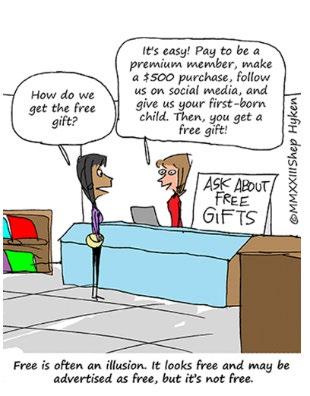
Submit Your Articles HCM Sales, Marketing & Alliance Excellence presented by HR.com JUNE 2023 25
This article is an example of free. Each week we send it to thousands of subscribers. We post it to my website. I create weekly videos based on these articles. And I don’t charge a penny for them. Most people who read or watch these have no intention of ever buying anything from me. I’m more than okay with that. If something I write or put in a video makes a difference in someone’s life or business, that’s good enough for me. Of course, business is business, and I hope these free offerings lead to someone saying, “I want to book Shep as our customer experience keynote speaker for our next meeting.” (Okay, I admit that was a shameless plug!) But I must emphasize that this is truly a free offering even if you never buy. No strings attached!
I’m a big believer that the more you give, the more you get. I like the idea of free and encourage you to embrace it – give it a try. It might lead to business or sales, but if not, that’s okay too!
Shep Hyken is a Customer Service and Experience Expert and the Chief Amazement Officer at Shepard Presentations. He is a New York Times bestselling author and has been inducted into the National Speakers Association Hall of Fame for lifetime achievement in the speaking profession. Shep works with companies and organizations that want to build loyal relationships with their customers and employees.
Would you like to comment?

Nothing Is Free, Even Free Shipping
Submit Your Articles HCM Sales, Marketing & Alliance Excellence presented by HR.com JUNE 2023 26
How Well-Organized Hybrid Helps You
Enhance Your Employees’ Experience with Workplace Management Tech and Data Strategies
By Heather Larrabee, OfficeSpace
Everything about how we work has changed, including the role of an office. And with many of them sitting empty, the wave of negative economic impacts is alarming.
“Many organizations have struggled with implementing successful return-to-office programs. Although 90% of companies are embracing hybrid work today, businesses are grasping for insights on how to “earn the commute,” right-size their real estate footprint, and increase collaboration when people come in,” shares Maya Ketter, VP of Client Success at OfficeSpace.
Many organizations use technology, data, and research to improve their agility and response as they develop post-pandemic workplace strategies. “Heads of facilities, real estate, finance, and HR need data to understand who’s using their workspace, when and how, so they can make the best decisions for the
business,” explains Chris Smithee, Director of Product Management at OfficeSpace.
Understanding Space Utilization for Workplace Agility
Adaptation is requisite for survival. And because hybrid work dynamics are evolving rapidly, disruptive digital technology leaders are using space utilization data to manage schedules, floor plans, and employee engagement programs to boost productivity when people ultimately gather.
Create and Test Scenarios to Right-size Real Estate
“Today’s teams need to embrace a cycle of testing, learning, acting, and adjusting as we work toward our hybrid end state, which is still years away,” reflects Ketter. “Our clients are using data to make decisions about office expansions, relocations, or reductions in their business cases for finance, and to evaluate which workplace strategy will
help them achieve their short and long-term goals as a business.”
Improve Operating Costs, Safety, and Productivity
In a hybrid office, you never know who will be in, and many teams have pulled back on front-office support. At the same time, many businesses still need to keep a log of visitors, packages, and deliveries, and vendor management software saw a huge spike in adoption since 2020 as teams moved away from reception services, or reinvested valuable administrative time into higher-value activities, without sacrificing security on-site.
“Visitor management systems streamline the office check-in process and deliver cost savings, enhanced security, and a delightful experience for visitors who may be new to the space. We’re seeing this technology help teams do more with less,” says Smithee.
Top Pick Submit Your Articles HCM Sales, Marketing & Alliance Excellence presented by HR.com JUNE 2023 27
Enhance Employee Experience On-site
“During the pandemic, many people started new jobs remotely. They’ve never been to the office, so when they visit for the first time, they want to know where they’ll be sitting, who they’ll be with, and where to find things,” says Ketter. Managing complex schedules, seating arrangements, and wayfinding can be a challenge without technology to orient employees that have been remote-first in recent years.
Data-driven Decisions for Workplace Design
“The metrics that matter have changed in space planning,” says Ketter. In a recent webinar, Ketter sat down with CBRE’s Global Workplace & Occupancy Management practice, Susan Wasmund, and Mary Carnes,
Head of Workplace Insights at OfficeSpace, to explore emerging data models used to right-size real estate investments and boost employee engagement.

“The research indicates that teams need to adapt their demand planning process, measure space based on utilization vs. density, use their benchmarks to test and evolve their workplace design, make cost-conscious changes, and use their existing technology like WiFi and badge scanning to complete their data picture,” explains Carnes. “Some organizations are progressive in their data maturity, while others are just getting started. There are cost-effective and culture-enhancing ways to evolve real estate and workplace strategies and support employee retention.”
Increased Connectivity for Talent Attraction and Retention
Attracting and retaining top talent is crucial for organizational success. “Following the “Great Resignation,” communicating your purpose and vision for why people should work for you is critical,” observes Ketter. “Gen Y and Z workers want values alignment, and they expect connection and collaboration. It makes sense–they’re building their careers, relationships, and perhaps even families, and those things happen in a community, not in isolation.” Studies show younger workforces are more inclined to be in the office and to welcome hybrid policies that require in-office schedules.
How Well-Organized Hybrid Helps You Submit Your Articles HCM Sales, Marketing & Alliance Excellence presented by HR.com JUNE 2023 28
Boost Connection, Collaboration, and Productivity
As hybrid work models become the norm, technology that supports seamless collaboration, communication, project management, and connection between “virtual-first” and “office-first” workers will give organizations a competitive advantage against teams who have been slow to design a workplace strategy plan and start testing and evolving it.
Empower Team Members with Flexibility
“We’ve entered the era of ‘work your way,’ and with it, the
expectation of flexibility that’s allowed us to be more human and healthy while also staying productive,” muses Smithee. Carnes agrees: “Teams want the freedom to choose how, when, and where they work.”
Enhance On-site Employee Experience
As teams return to the office, whether full-time or partial, tools to help them access resources, directories, amenities, and teammates will ultimately reflect the organization’s commitment to their presence and productivity. “We know that well-organized hybrid approaches are delivering 3-5% increases in productivity,
and ultimately that’s got to be enabled by a clear vision, great technology, and a commitment to making the people in our workplaces successful when they’re with us,” concludes Ketter.
Heather Larrabee is Chief Marketing Officer at OfficeSpace
Would you like to comment?

Augmented Intelligence: Why Human Judgement Remains Invaluable Submit Your Articles HCM Sales, Marketing & Alliance Excellence presented by HR.com JUNE 2023 29


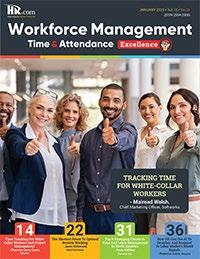
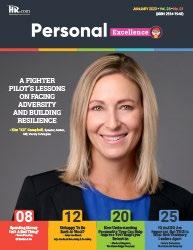
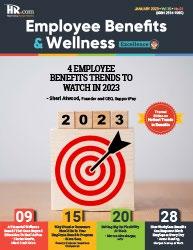
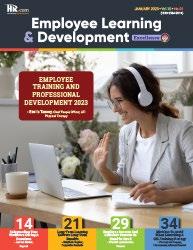
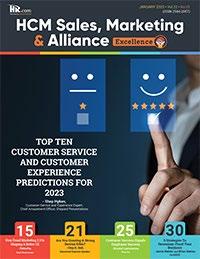

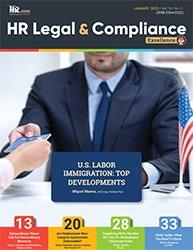
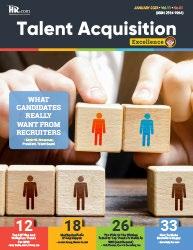
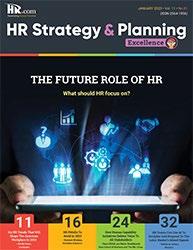
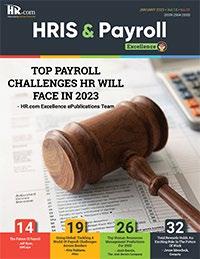
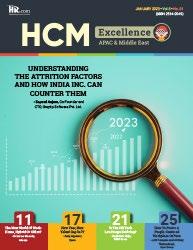

Like to submit an article? Use our online submission form or for more information go to www.hr.com/ExcellencePublications Publications 13 Targeted Publications to Reach Your Audience Informing, Educating, Enlightening and Assisting HR professionals in their personal and professional development, the Excellence series offers high-quality content through the publications!



 - John Tschohl, Founder and President, Service Quality Institute
- John Tschohl, Founder and President, Service Quality Institute


 - Sandeep
- Sandeep











































 Dave Ulrich
Rensis Likert Professor, Ross School of Business, University of Michigan Partner, The RBL Group
Julie Winkle Giulioni Author, Virtual /Live Keynote Presenter, Inc.’s Top 100 Leadership Speakers
Dr. Beverly Kaye CEO, BevKaye&Co.
Dave Ulrich
Rensis Likert Professor, Ross School of Business, University of Michigan Partner, The RBL Group
Julie Winkle Giulioni Author, Virtual /Live Keynote Presenter, Inc.’s Top 100 Leadership Speakers
Dr. Beverly Kaye CEO, BevKaye&Co.

 By Nevil Chheda, Integreon
By Nevil Chheda, Integreon




 By John Tschohl, Service Quality Institute
By John Tschohl, Service Quality Institute






 By Guillermo Triana, PEO Marketplace
By Guillermo Triana, PEO Marketplace












































